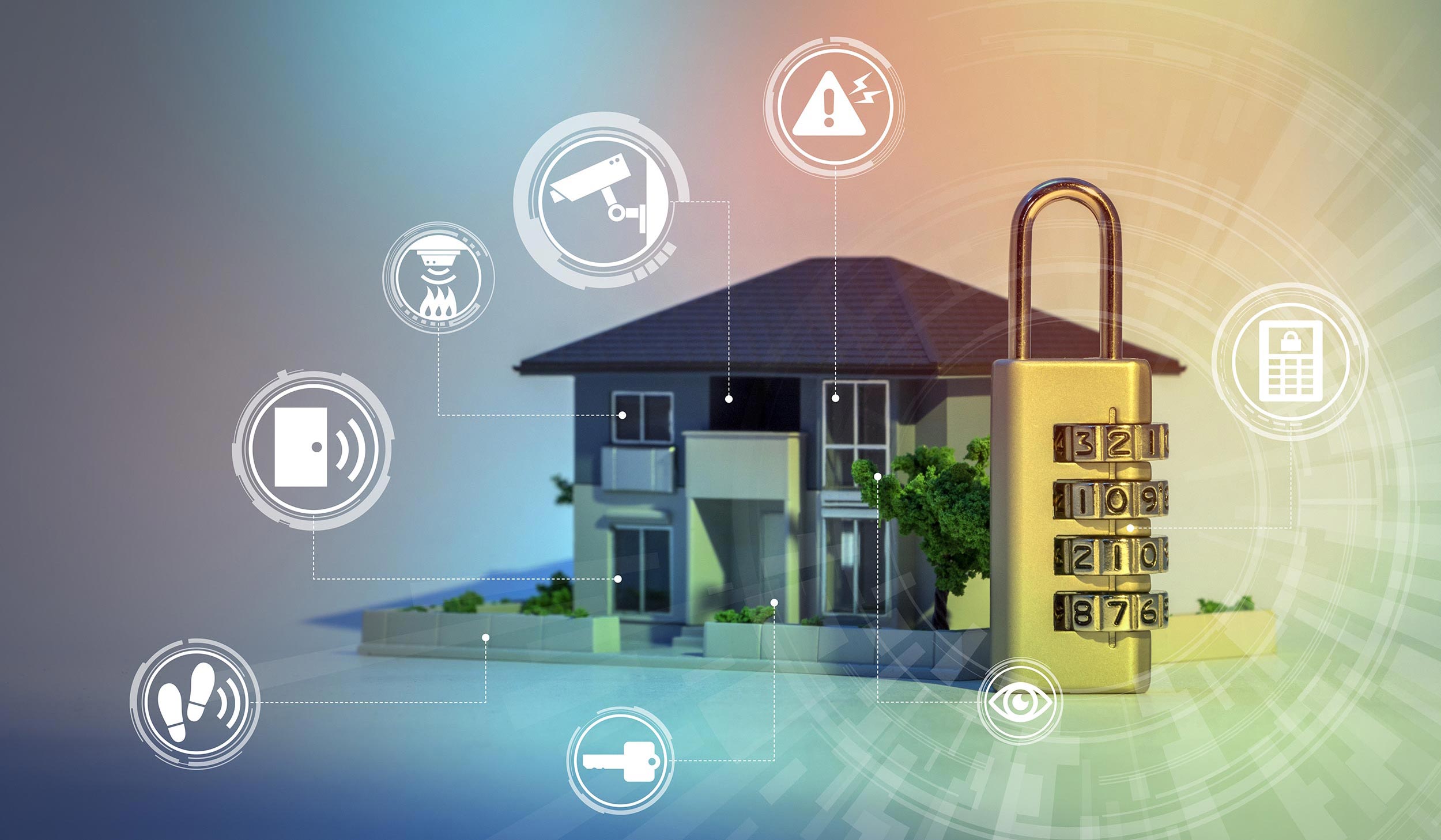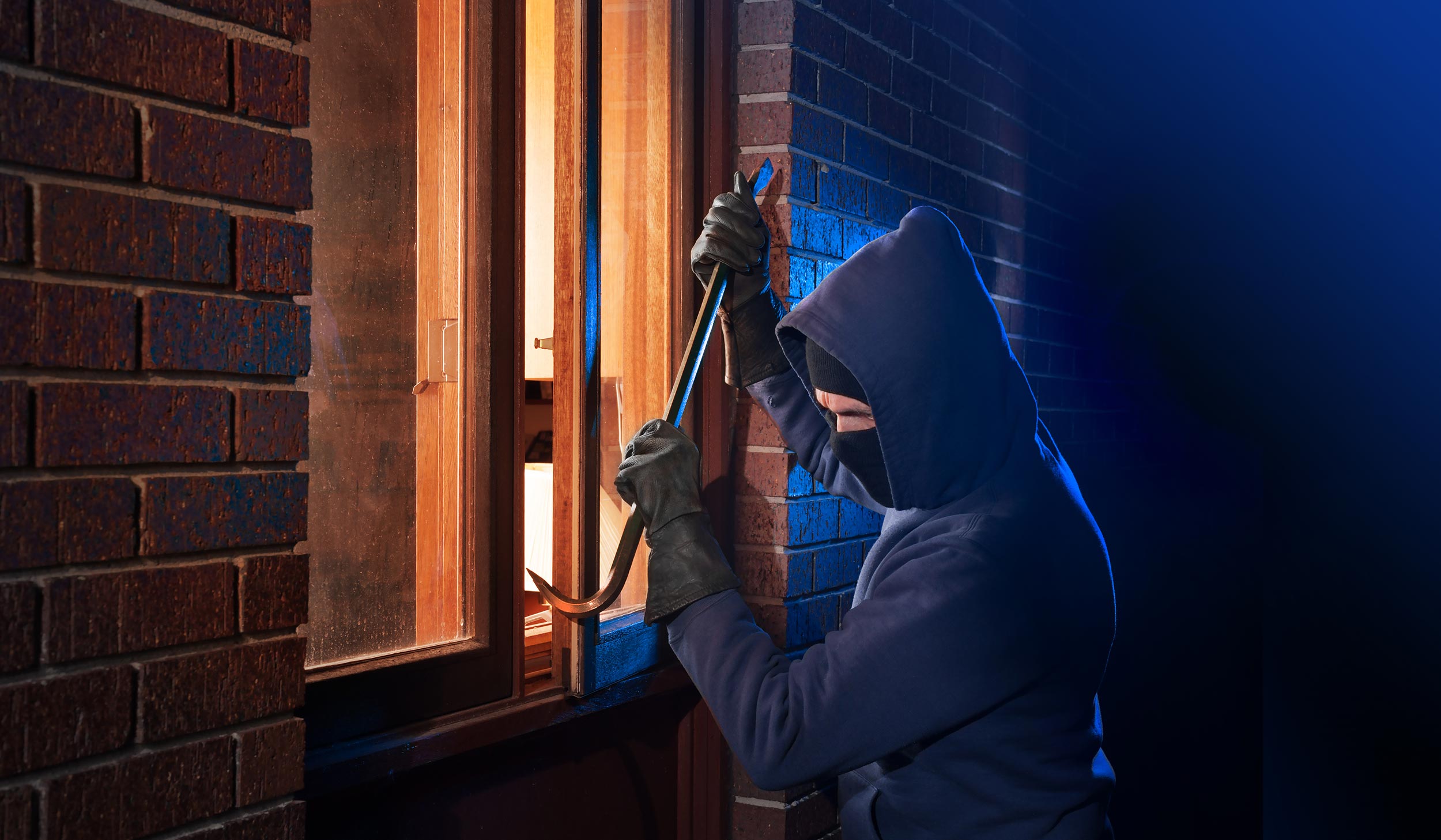
You May Need To Rethink Your Hide-A-Key
Learn why typical methods of hiding your spare key—and even some newer, creative ideas—fall short. Learn about some better ways to securely control access to your home.
- Hide-a-key options on the market are simply not secure, as burglars are just as likely to know about them as you are.
- When living in a shared home, renting out an AirBnB, or granting access to your home to other people in your absence, a keyless entry option is more efficient than a traditional lock-and-key option.
- A security gate with remote locking and unlocking capabilities—such as a swing gate operator a sliding gate opener—is an even more secure option than a keyless system.
We’ve all been there: locked out of our house, flabbergasted because our cleverly concealed hide-a-key hadn’t done as great a job of hiding our spare key as we’d hoped, and now it’s nowhere to be found.
In other cases, we need to hide a key for a neighbor who will be coming to check on the house while we’re away on vacation, or else a trusted friend who will be by to water our plants.
Let’s talk about some of the most common places people hide their spare keys, and then get into why they aren’t the best or safest way to provide access to the housesitter, babysitter, or dog-walker when you’re away (Or, when you have lost your house key, yet again).
Options for Granting Secure Home Access
Hide-a-Key
Common Hide-a-key Methods (that all burglars know about)
When one thinks of a home invader, they often imagine a criminal—someone they don’t know—breaking into their home with nefarious intent.
But what if we told you that most burglaries are committed by people who live close to your home? That means that most home invasions are committed by burglars who often have cause to pass by your house, who can monitor your comings and goings and are aware of where you hide your spare key.
Let’s talk about some of the most common places people hide their spare keys, and then get into why they aren’t the best or safest way to provide access to the housesitter, babysitter, or dog-walker when you’re away (Or, when you have lost your house key again).
- In The Mailbox A common place for hiding your key, especially if it’s a one-off, quick situation, your mailbox is one of the least safe options when it comes to hiding your spare key. For one thing, it’s either going to be attached to your home, right next to your front door— where 34% of burglars enter your home or else it won’t be far off.
- Under The Doormat/Potted Plant/Garden Gnome or Bunny The very first place a potential burglar would look for your spare key is under your doormat or potted plant—and even under your trusty, adorable (but unfortunately faulty security guard) lawn gnome.
- With a Neighbor/Trusted Friend This one isn’t the worst idea, but it isn’t always practical, both because we aren’t always on close, speaking-terms with our neighbors, and because organizing a babysitter, house cleaning service, or plant watering friend when you’re on vacation already requires coordinating two schedules—toss in your neighbor or friend’s schedule, and things can get really complicated, really quickly.
Less Common Hide-a-Key Places (that are still not the safest option)
Over the years, as people began to realize that the old tried and true methods of hiding your spare key weren’t working any longer, good old American ingenuity kicked in and people came up with some pretty creative ideas on ways to hide their spare key.
- Under A (Fake) Rock In this scenario, you’ve hot-glued a pill bottle to the bottom of a rock, hidden your key inside, dug a small hole, and sat the rock-pill bottle combo inside the hole. At first glance, it looks like just another rock in your drive. There are also fake rocks for purchase which have a handle key hiding box built into the back or bottom of them. Unfortunately, a fake rock often looks fake, try as one may to camouflage it.
- Under A Patio Chair or Table In another somewhat common but not too terribly common scenario, people hide their spare key under a patio table or under the foot of a patio chair. One issue with this one is that a passerby will certainly take note of someone ambling about on your front patio or porch, flipping over chairs and looking under table legs.
- Behind a (Fake) Outlet Cover This one can be substituted for a fake faucet, fake sprinkler, or even a fake drain cover—the idea remains the same: hide your spare key under/inside some mundane, commonplace feature most houses would have in their front lawn or on their front porch, anyway. The general hope is that a burglar wouldn’t think to lift up a sprinkler, faucet head, or drain cover, let alone open an outlet cover, looking for a hidden spare key. Unfortunately, as clever as this idea is, it’s clever enough that most burglars today would be aware of it, too.
- Behind/Inside a Birdhouse In this scenario, one hides their spare key either behind a birdhouse hanging on an exterior wall, or else inside a birdhouse. In both cases, this option works best when there is a family of birds actually nesting in your birdhouse, so as to conceal the hidden key. For this reason, this is one of the least intelligent ways to hide your key—because who wants to have to fight a mama bird, threatened because your house sitter stuffed her hand in a bird’s nest, looking for a hidden key?
- Under a Loose (or otherwise noteworthy) Brick or Paver This one is about as safe as the doormat option, both because it’s common knowledge and because if a brick is loose (or otherwise noteworthy) enough for you to decide it’s the one to hide the key under or behind, a burglar would notice the same thing. There are several other clever ideas tossed around these days, but unfortunately, as soon as a clever hide-a-key option becomes public knowledge, it becomes common knowledge for burglars, as well.
- Hide-a-Key Behind a Magnetic Door-Knocker If your front door has a metal door-knocker on it, rather than screwing it directly to the door, you could hot-glue a magnet to the back of the door knocker’s main body and another on the front door itself. The spare key would be hidden behind the body itself, just below the magnet, perhaps taped with some electrical tape. Of course, the downside of this option is that one heavy wind or an overly rambunctious slamming of the front door and your hide-a-key pops right off, falling on the ground where you may not notice it until a burglar has, and it’s too late.
- Beneath (Fake) Dog Poop This one is definitely the most creative option on the list! In this scenario, you can either make a fake turd from a glob of hot glue that you’ve painted brown, or else purchase a pre-made fake turd with a key holder attached to the bottom, then set it in a hole, much like the fake rock situation. And, just like in the fake rock situation, this method seems like a good idea until you actually have a noticeable piece of fake poop on your front lawn, one which you never bother to pick up and which never decays—not to mention it can be especially suspicious if you don’t have a dog for a pet.
Should You Even Be Hiding Your House Key?
If most home burglaries occur when someone walks through your front door, pilfers your belongings, and walks right back out your front door, is it even a good idea to be hiding your house key outside?
Considering the fact that homes in America are burglarized every 18 seconds, maybe it’s time to consider alternative measures to securing your home—keyless entry options.
Who Needs a Keyless Entry Option?
If you are living in a home with other adults, such as a shared rental property, as well as an AirBnB—basically anywhere multiple people will be coming and going from your home often—granting people keyless access to your property is a must.
Keyless Entry,
Coded Lock
In the world of keyless entry, a coded lock is one of the more accessible options. These keyless locking mechanisms operate using a keycode which may or may not be digitally connected to a cloud service.
Dual Keyed/Keyless Coded Locks
These are keyless locking mechanisms which operate via a keypad, set to remain locked until someone enters the pre-set keycode. What sets these apart from other types of keyless options is that there is still a key-lock system as a back-up in case the batteries were to die. This, of course, means they can be picked, like any other keyed locking door.
Digital Locking App
One of the more accessible security options is a locking mechanism with both a keypad entry system and an app with cloud-based locking and unlocking capabilities.
Biometric Sensor + Keypad Entry
Some are even more advanced, featuring not only a keypad but a biometric sensor. The idea here is to prevent entry except to those whose unique fingerprints or retina patterns have been included in the list of stored people who are allowed entry.
Of course, this isn’t a fool-proof method. For one thing, biometrics scanners, though extremely sophisticated technology, can be hacked.
Furthermore, should the battery die or the power be cut, most of these coded keypad or biometric sensor options don’t offer a keyed entry for emergencies, meaning you could be trapped outside/inside your home—which could, obviously, be a problem for a number of reasons.
Keep Burglars Entirely Off Your Property
With all this talk of keyed and keyless entry, let’s talk about a smarter way to stop break-ins: security gates
Did you know that nearly 23% of home burglaries happen when an intruder enters the home through a window on the first floor?
The best way to prevent home break-ins is to prevent burglars from ever entering your property in the first place.
Security Gates: Swing Gate Operators
As the name suggests, a swing gate operatoris a mechanism which swings a security gate open and closed.
Swing gate operators can be used on both residential and commercial properties, and they can support a broad range of security gate sizes, from small gates for private homes to much larger, dual-gates which open up to a much larger driveway, for commercial properties.
One advantage to using a swing gate operator is that they can be used for gates up to 16 feet wide, weighing as much as 800 lbs.
A swing gate operator is controlled either by a programmed remote entry controller—like a garage door opener you’d keep in your vehicle—or by a fixed entry controller that sits at least six feet away from the swing gate operator, meaning it’s far away from anyone who may be interested in tampering with it to gain entry.
The best swing gate operators have solar-powered backup systems so that, in the event of a power outage or loss of battery power, the swing gate operator can still be used to open and close your security gate.
To save power, they will also often have a power-saving setting which essentially puts the mechanism in “sleep” mode when not in use.
On top of these power-friendly aspects of a security swinging gate operator, the best ones operate as quietly as they are strong.
Security Gates: Sliding Gate Openers
The next step up from a swing gate operator is a slide gate opener. Whereas most swinging gate operators can only manage a gate which is up to 16 feet wide and/or weighs as much as 800 lbs, a good quality sliding gate opener can handle gates which are up to 50 feet wide and/or weigh up to 3,500 pounds.
Like swing gate operators, sliding gate openers are operated by a remote control, and a good quality sliding gate opener will have a solar-powered backup option in the event of a power outage.
How to Choose Between a Swing Gate and Sliding Gate Opener?
- Cost. Between the two options (swing gate operators or sliding gate openers) a swing gate operator is going to be more affordable than a sliding gate opener, but a sliding gate opener can manage a much larger and heavier gate than a swing gate operator.
- Space. A swing gate operator requires space for swing distance & mdash;twice as much space as the width of the swing gate. A sliding gate opener, on the other hand, only requires about two extra inches of space on either side of the gate.
- Installation. Generally speaking, a swing gate operator is easier to install than a sliding door opener.
- Lay of the land. If the driveway leading up to your property is angled rather than flat, uphill swinging gate operators are going to be a better option than a sliding gate opener.
Conclusion
Hiding a spare key is the least safe way to control access to your home when you’re not around—and burglars are just as aware of hide-a-key options as you are. Consider upgrading to a keyless lock or, for added security, consider installing an Eagle Gate swing gate operator or sliding gate opener.
Eagle Access Control Systems offers high-quality swing gate operators and sliding gate openers. Whether you need a swinging gate opener or a sliding gate operator, Eagle Access Control Systems is a reliable, time-tested, industry-leading manufacturer of security gate openers—and has been for more than two decades.
Our gate operator chassises are made of sturdy, weather-resistant zinc-plated steel and are equipped with important safety features, like motor brakes and instant release arms, as well as instant reversing motors.
continue reading



